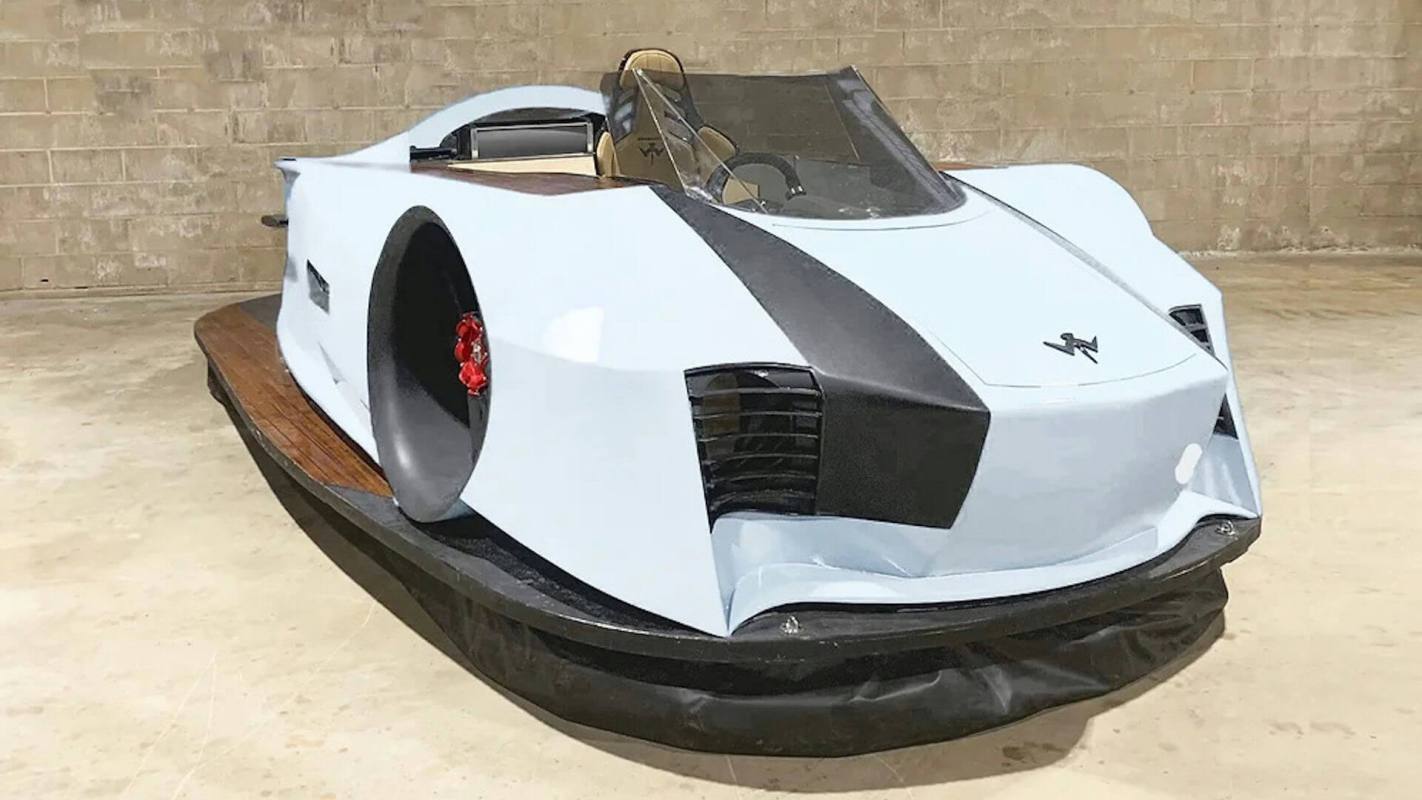VonMercier is on a self-described mission to turn heads as it makes its mark in exploration, recreation, and transportation, and its electric hovercraft is doing just that.
The Arosa EV Hovercraft isn't the sleekest vehicle to gaze upon, but that's not necessarily a surprise. Electrek pointed out that hovercrafts are like the "platypus of the transportation world, borrowing parts and principles from wildly divergent sources and mashing them together into something that physically functions but rarely looks very attractive."
That may be true, but it's hard not to dream about the adventures that could be taken in such a vehicle.
According to VonMercier, the Arosa floats 8 inches over the ground on a cushion of air and is able to navigate on just about any terrain, including over grass, water, sandy shorelines, and ice or snow. Its HoverDrive technology allows it to maneuver laterally, in addition to the traditional forward and reverse motions.
You can watch footage of the craft gliding across a lake here, and see it operate on both land and water in this clip.
It's powered by a lithium-ion battery, meaning explorers are able to refuel with a simple charge, removing the need to lug around unwieldy tanks holding expensive gasoline.
The hovercraft, which has a cruising speed of 20 mph and a top speed of 50 mph, is able to carry up to three passengers, and its quiet-fan technology is also expected to ensure a relaxing ride with minimal disruption to animals or marine life.
"The electric powertrain greatly reduces noise, pollution and maintenance," VonMercier explained on its website.
The hovercraft technology sounds like it provides similar money-saving, planet-friendly benefits as other types of electric vehicles, which have been rising in popularity.
The Arosa just isn't meant for long distances, with VonMercier giving it an estimated range of 40 to 80 miles. Depending on use, the battery is able to last from one-and-a-half to three hours, and it takes three to six hours to charge.
Mining for lithium and other minerals found in traditional EV batteries does create pollution, but studies have shown that those emissions are a drop in the bucket compared to the amount generated by gas-powered vehicles over their lifetimes.
🗣️ Would access to luxury charging stations make you more likely to buy an EV?
🔘 YES 👍
🔘 NO 👎
🗳️ Click your choice to see results and speak your mind
According to University of Oxford researcher Hannah Ritchie, our current mining for dirty-energy sources also greatly outweighs what would be needed to harvest materials for less polluting technologies.
"At its fastest rate of deployment, mining quantities for low-carbon energy will be 500 to 1,000 times less than current fossil fuel production," Ritchie detailed on her Substack.
Surprisingly, recreation vehicles — like ATVs, snowmobiles, and dirt bikes — account for large volumes of pollution, with the Sierra Club noting that the engine types used on many motorized pleasure rides produce disproportionate amounts compared to the gasoline they need to run.
The final estimated cost of the Arosa is at least $200,000, according to VonMercier, making this less-polluting recreation vehicle a luxury item. It'll be interesting to keep an eye on how the hovercraft realm develops, though, as many innovations have become increasingly accessible over the years.
Join our free newsletter for weekly updates on the coolest innovations improving our lives and saving our planet.









